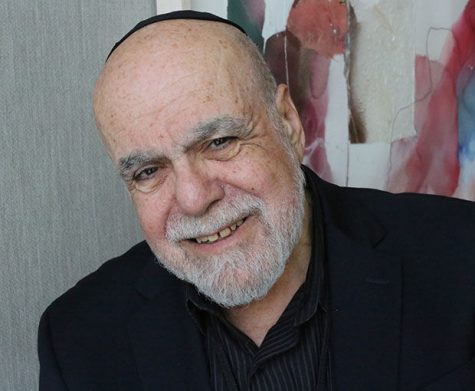Recalling and celebrating the overlooked great women of the Passover story
Published April 5, 2022
The Shabbat before Pesach is known as Shabbat HaGadol, the Great Shabbat.
For me, this particular Shabbat HaGadol will be a time to recall and celebrate the all too often overlooked great women mentioned in the Passover story. What these women had in common was that each participated in the birth and nurturance of young Moses. And in no small part, each acted in what I’m calling “godly ways.”
Under their tender and watchful care, Moses thrived and ultimately became the leader and teacher of his people. His birth occurred against the backstory of a power hungry Pharaoh who attempted to wipe out the Israelite nation.
ADVERTISEMENT
The five great women who assisted in his birth and nurtured Moses were Shiphrah and Puah, Jochebed (Moses’ birth mother), Miriam (his older sister) and Pharaoh’s daughter (his adoptive mother), known as Bithya or Batya. Each woman refused to participate in Pharoah’s horrendous crime, even at the risk of losing their own lives. Their behavior can best be referred to what I called previously “godly,” or acting in ways that we associate with the notion of God: generous, compassionate, courageous and strong.
Who was the Pharaoh of our narrative? Some historians believe that he might very well have been Thutmose, whose reign began in 1526 B.C.E. These same sources suggest that he had a daughter named Hatshepsut, and I will return to explore this later.
Pharaoh begins his attacks by spreading rumors that the people of Israel had grown so rapidly that they were about to outnumber “real” Egyptians, threatening to obliterate their culture. Rather than destroy them in a bloody massacre, which might incur displeasure among others in his court, this despot attempts to enlist the aid of local midwives Shiphrah and Puah.
He demands that they quietly murder each newborn Hebrew male infant. These godly women ignore Pharoah’s command. They assist the birthing women and allow the male children to be born and safely returned to their mothers. When confronted by Pharoah they exclaim, “The Hebrew women are not like the Egyptian women. They are vigorous and give birth before the midwives can come to them.”
A clever answer, one that used stereotypical images to feed the racially biased leader’s imagination.
ADVERTISEMENT
Thereafter, Pharoah becomes even angrier, and he declares, “Every boy born you shall throw into the Nile, but let every girl live.”
Immediately after this murderous rant, we read that “a certain man of the house of Levi went and took a daughter of the house of Levi … who then gave birth to a son.”
The ancient rabbis wondered what happened that motivated this particular couple to defy Pharaoh’s decree. An elderly scholar or preacher created the following possible scenario:
“The young daughter of the couple came to her parents (who had separated in order to prevent conception) and she scolded them saying unless you reunite, and resume having children, you will be complicit in the King’s attempt to wipe out the people of Israel. The young woman’s tactic achieves its goal. The couple reunite and, as a result, a great leader is born. It is believed that this wise and courageous young daughter was Miriam.”
Moses’ birth mother, Jochebed, hides her child for three months but realizes that he is getting older and therefore is no longer safe. Rather than despair, she hatches a plan whereby her infant would be placed in a waterproof basket and set afloat on the Nile River. The older sister is sent to hide among the bulrushes to watch and see what becomes of the infant. The mother’s courage, faith and strategic thinking as well as the daughter’s observational skills help save the child.
The poet Carol Rose speculates that the birth mother understood that Egyptian women came to the Nile to seek the blessing of fertility. Therefore, when a basket with a newborn child suddenly appeared and seemed to be floating in their direction, they understood this as a supernatural event. In so doing, they answered Jochebed’s prayers. Her actions ultimately saved the nation’s future leader.
As I mentioned earlier, historians identify the Pharaoh’s daughter with a vaguely identifiable person known as Princess Hatshepsut, daughter of Pharaoh Thutmose I. According to these scholars, using part of Thutmose’s name might explain why the Princess calls him Mose/Moshe. The use of her father’s name may have been a ritual form of adoption into the royal family.
Another version of the adoption story is more powerful, namely the one found in Midrashic literature. This version begins as the previous one did, but it goes on to say:
“The daughter of the Pharaoh stretched out her arms to retrieve the baby from the marshes, but she could not grasp him. At that precise moment, the Holy One extended her reach and the Princess took the baby’s basket in her arms.”
She, the biblical storyteller informs us, understood that this was a Hebrew child. Nevertheless, she adopts him. The Midrashic narrator says that at that moment, God adopts her and her name changes from the Daughter of Pharaoh (Bat Pharaoh) to Batyah, the Daughter of God.
In a sense, two adoptions occur simultaneously: Pharaoh’s daughter adopts Moses, and God adopts the daughter of Pharaoh.
The stories of these remarkable women have become an inspiration for me on this Shabbat HaGadol. As we approach Passover of 5782, I hope that the five mothers of Moses inspire us all to become the godly and courageous people we were created to become.
Shabbat Shalom.

Rabbi Neal Rose serves Congregation B’nai Amoona and is a member of the St. Louis Rabbinical and Cantorial Association, which coordinates the d’var Torah for the Jewish Light.
















